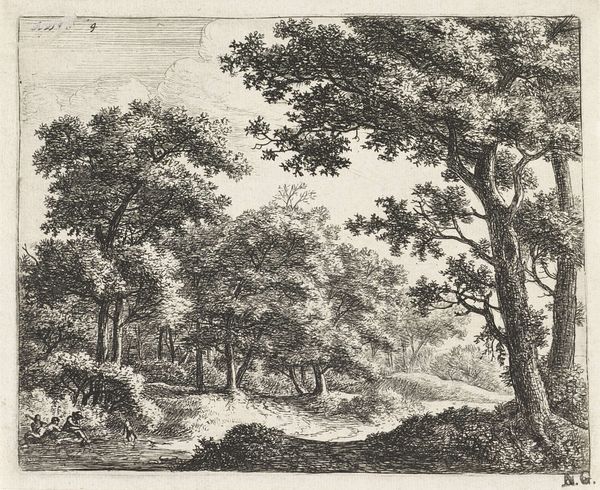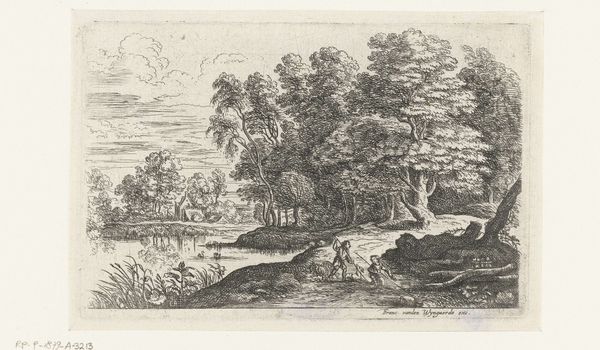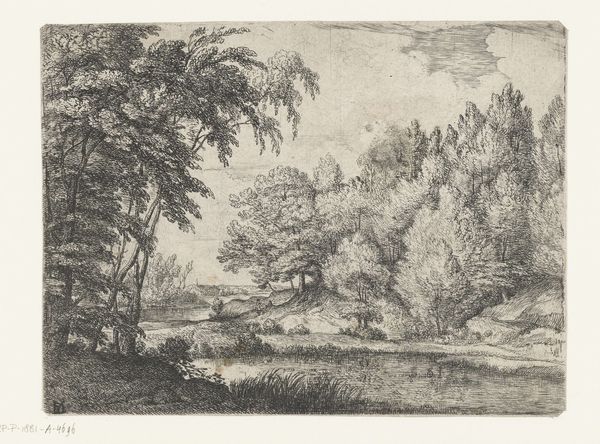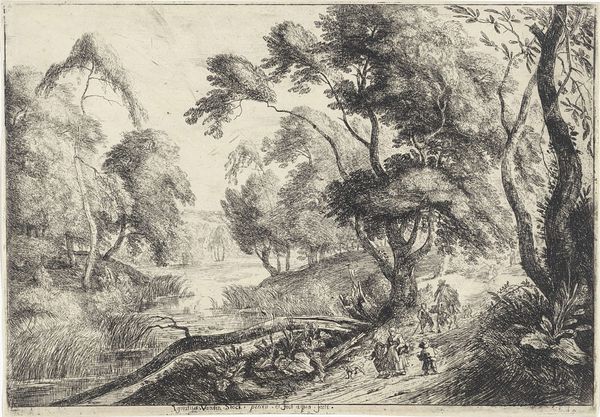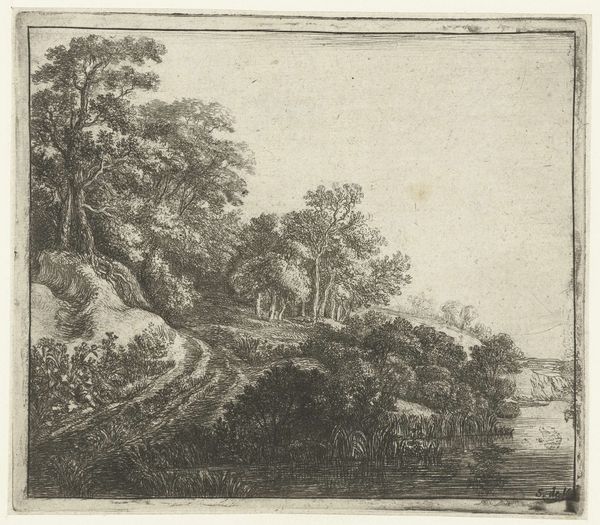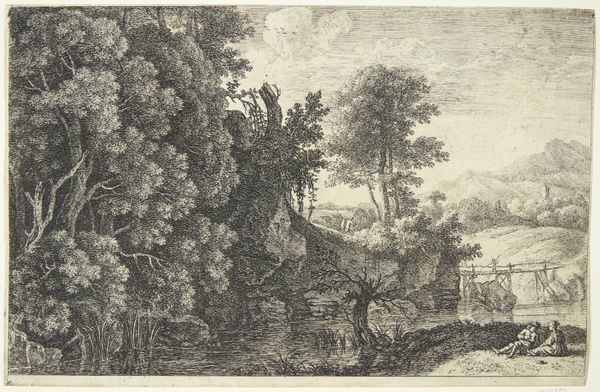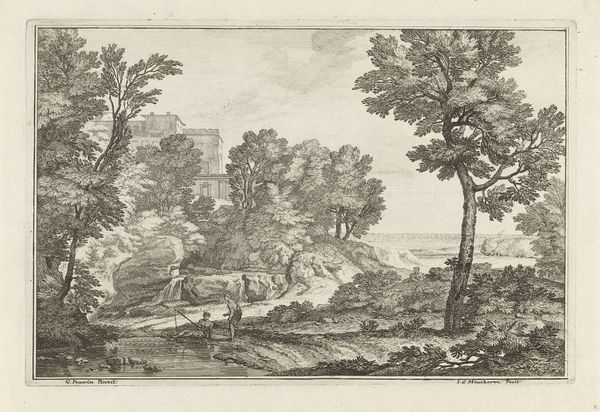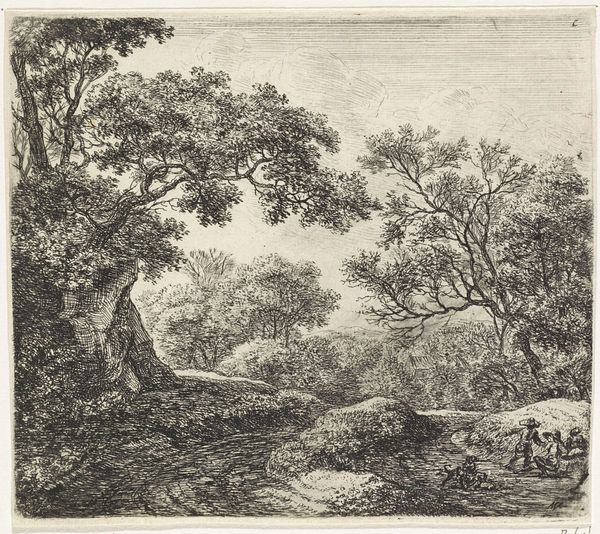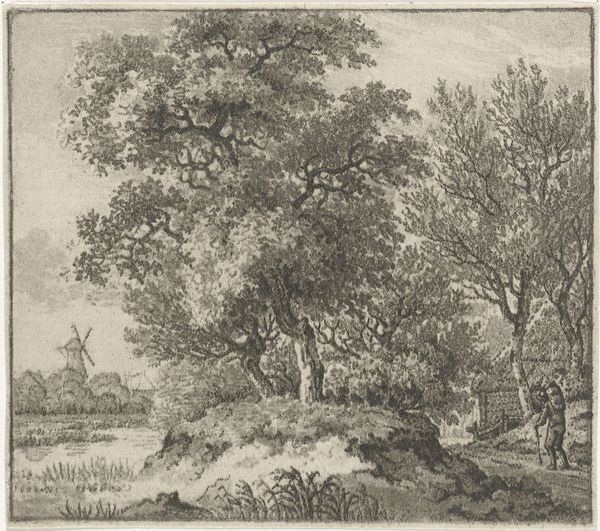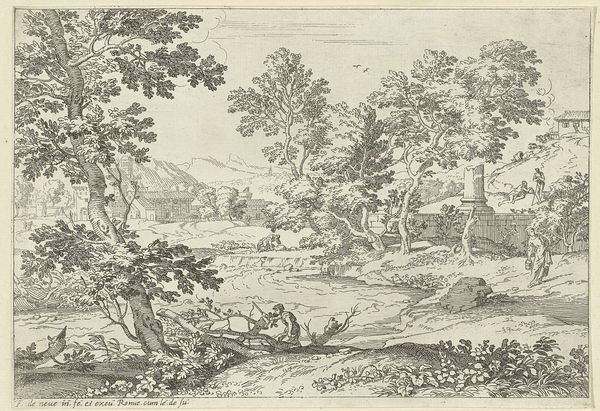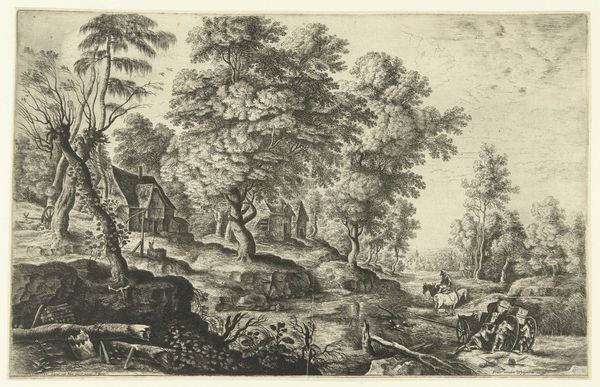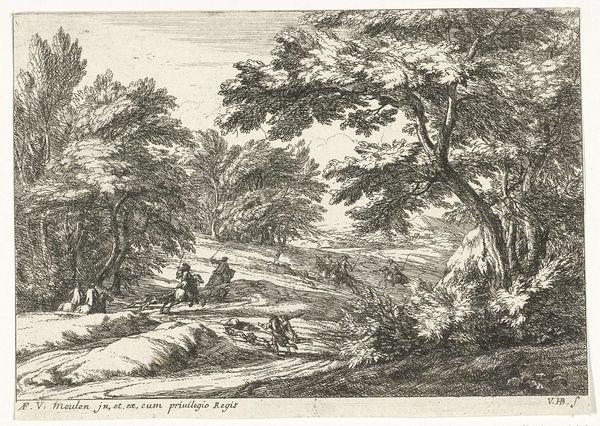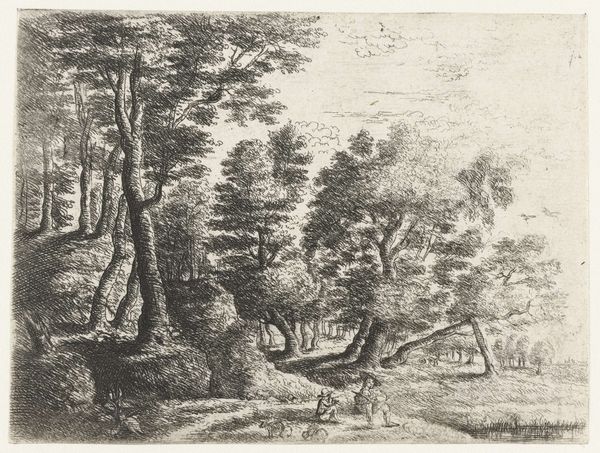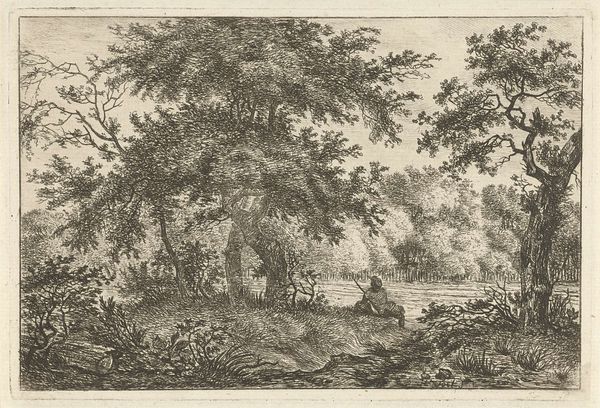
drawing, print, etching, ink
#
drawing
#
dutch-golden-age
# print
#
etching
#
landscape
#
ink
Dimensions: height 175 mm, width 242 mm
Copyright: Rijks Museum: Open Domain
Curator: Ignatius van der Stock gives us "Moeras," a Dutch Golden Age landscape from about 1653 to 1665. It's an etching, using ink on, likely, paper. Editor: There’s something unsettling about it, even with the picturesque subject matter. The textures feel almost chaotic, especially in the foreground foliage. It's not exactly inviting, more like…a place to get lost. Curator: I think that texture comes from the printmaking process. Consider the economics and accessibility of prints at this time. This would have made landscapes like these, idealized or realistic, available to a broad segment of the population. This wasn’t necessarily about high art but about access to imagery. Editor: Certainly. But the way the lines coalesce – look at the density around the large tree on the right, then compare it to the hazy background – creates a tangible sense of depth. It’s not just the vanishing point; it's the control of tone. Curator: It also hints at the Dutch obsession with landscape and its connection to national identity and land reclamation projects. This isn’t just pretty scenery. These scenes helped to cement a cultural understanding of their nation and resources. Van der Stock made quite a number of prints of similar subject matter, speaking to its value for that society. Editor: Perhaps. However, from a purely formal standpoint, there’s something quite innovative in the way van der Stock handled light. Notice how it’s not evenly distributed; it feels almost directional, guiding your eye deeper into the composition. Curator: Directional light can also represent the changes that industrial practices demanded, making images like these attractive to the burgeoning middle class, connecting land to their profits and future. Editor: Well, whatever his intent, van der Stock certainly captured a certain… something here. It's a bit more complex than I first assumed. Curator: Indeed. Looking through the lens of the printmaking practice helps us understand that, giving another view into the artistic landscape and its significance.
Comments
No comments
Be the first to comment and join the conversation on the ultimate creative platform.
